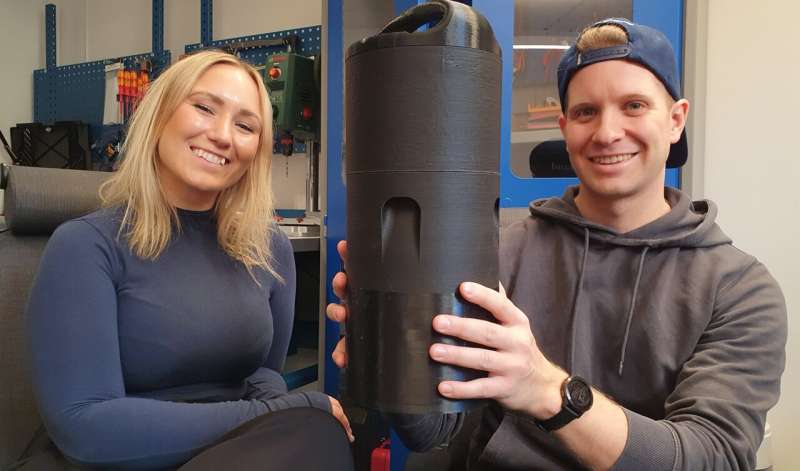This article has been reviewed according to Science X's editorial process and policies. Editors have highlighted the following attributes while ensuring the content's credibility:
fact-checked
trusted source
proofread
Students design prototype so that exterminating bed bugs will no longer require a 'human sacrifice'

In the category of household pests, few are as difficult to exterminate as bed bugs. Pesticide treatments depend on someone sleeping in the infested room as living bait to lure the creatures out of their hiding places for an evening's blood feast—a big sacrifice for most people. The process can take weeks and presents a conundrum for hotels and guest houses.
But a pair of master's students from KTH Royal Institute of Technology, Maja Åstrand and Simon Lilja, have designed a machine that relieves people of that unpleasant duty.
"You don't have to be bait any longer," Åstand says.
Bed bugs are attracted to CO2, which humans aspirate while sleeping. The students' prototype device lures them out by emitting a far-reaching CO2 signal. Åstrand and Lilja are also developing an on-board camera system that would observe the bed bugs' behavior and enable the machine to optimize its signal accordingly.
With a patent pending the two have formed the company SimulAir with support from the university's KTH Innovation center. The pair named their product Ifigenia, after a princess from Greek mythology who is sacrificed to the goddess Artemis during the Trojan War.
While electronic bed bug monitors abound, they are meant to detect the presence of bed bugs. "Our technology focuses on what you do after you find a bed bug infestation," she says. "We're focused on the treatment of the infestation, and as far as we know there are no other technologies meant to attract and capture bed bugs as a means of treatment."
Åstrand says the idea for the product came from a bed bug infestation she experienced four years ago in her own apartment. "That was really traumatic for me. I had to sleep as bait for eight weeks, and that's the problem we have tried to solve by replicating this tactic."
Next steps are to bring the prototype for tests in the U.K. where a lab is set up to simulate a furnished living space that's infested with actual bed bugs, she says.
Lilja says they are optimistic that the machine's allure is potent enough to prevent bed bugs from venturing into adjoining rooms during treatment. "Our ultimate goal is to enhance the machine's allure to a level where it even surpasses human attraction," he says.
The technology may even shorten treatment times, he says. "This is one of the main things we are trying to evaluate during our field tests.
"Based on the science regarding both bed bugs feeding behavior as well as secondary population waves caused by nymphs and eggs we hope to be able to cut down the treatment time significantly."



















